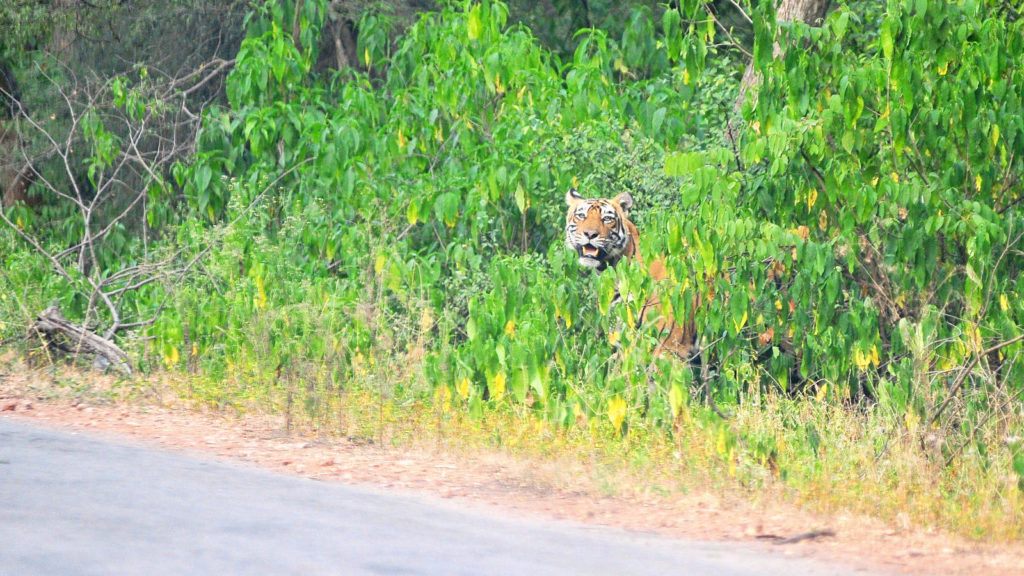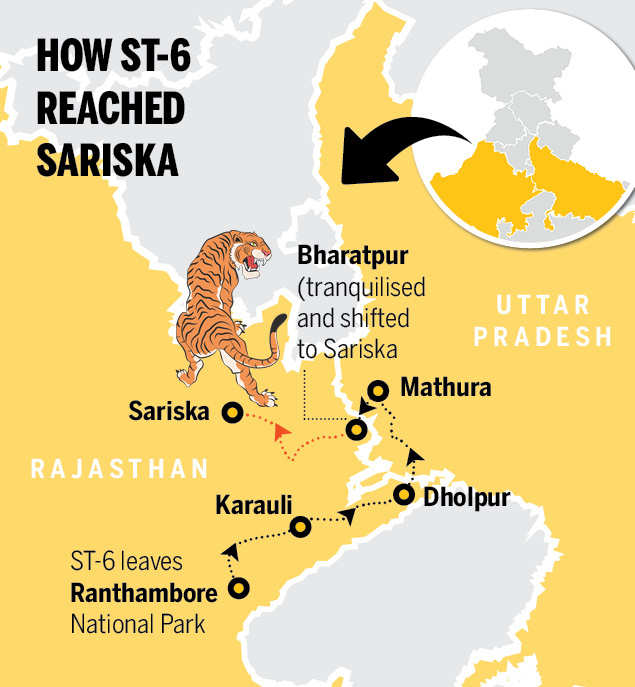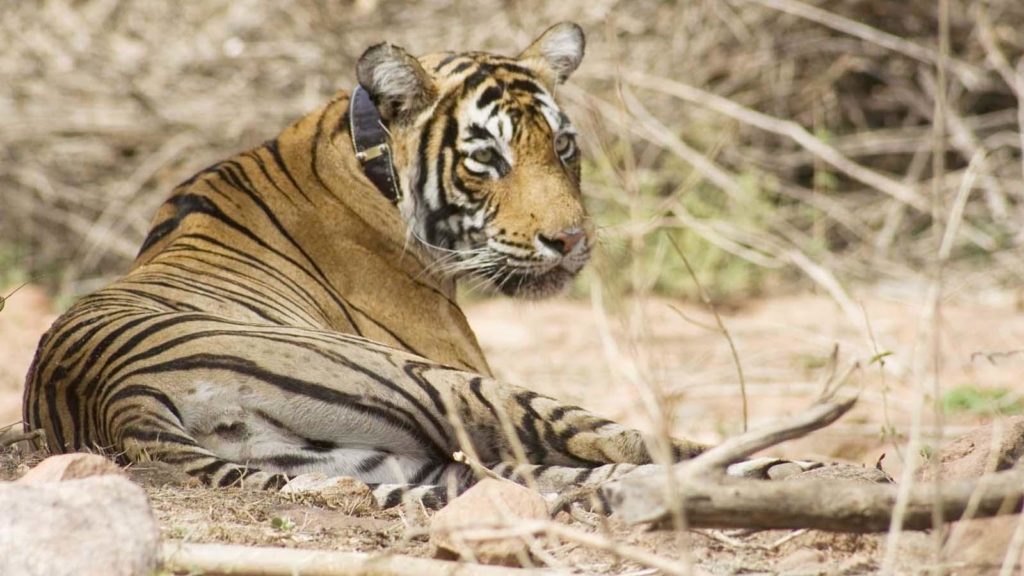- BY tictac
- POSTED IN Jungle News
- WITH 0 COMMENTS
- PERMALINK
- STANDARD POST TYPE

Govt apathy, fund and staff crunch, poor infrastructure and a falling tiger count may ruin this tiger reserve in Rajasthan forever
SARISKA: It has been a long journey for a soulmate, and a hectic week, for tigress ST-9. From deep within the Sariska Tiger Reserve(STR) at Sarunda, the tigress travelled to Chamari Ka Bera, 25km away near the entrance to the park in search of a male. But the journey proved futile.
The sole male tiger in the area, ST-6, is ageing and at least four other females are looking for him. Wildlife experts believe that the tigresses may soon leave the reserve in search of a mate. That may set the alarm bells ringing as far as the tiger reserve is concerned.


On the lookout for a mate?
Compared to the flourishing RanthamboreTiger Reserve (RTR), lack of political will and years of step-motherly treatment have hit Sariska so hard that if immediate corrective steps are not taken, the dream of seeing its population sustain and grow after the first tiger was relocated in 2008 might fade away.
“There is an urgent need to relocate a male tiger,” says wildlife enthusiast Abhimanyu Singh Rajvi, a frequent visitor to STR.
Recently, male tiger ST-4 died in a territorial fight with ST-6, the third death after the reserve was repopulated in 2008. ST-1, the first tiger brought from Ranthambore, also a male, died in 2010 after villagers poisoned it. On March 19, 2018, a four-year-old male tiger ST-11 died after getting entangled in a barbed wire fence laid by a villager close to a forest post adjoining Sariska.
Currently, the park has three males, eight female tigers and eight cubs, with ST-6 the dominant male

“If steps are not taken to ensure that the tiger gets regular food, ST-6 may not survive. ST-6 is a famous tiger. After launching one of the worst attacks on the then RTR ranger Daulat Singh Shekhawat, it had gone for a long walk to Uttar Pradesh before returning from Bharatpur. With him gone, we will lose another male,” said Dinesh Verma Durani, founder and general secretary of Sariska Tiger Foundation and a member of the advisory committee for Sariska.

An option is to relocate male tigers from Ranthambore, which has a skewed sex ratio in favour of males, forcing many sub-adults to stray away. But not all think so. “While relocation to Sariska seems a bright idea, we will not be able to monitor the animal with our limited infrastructure. A new male tiger without a marked territory may also pose a threat to cubs here,” said STR divisional forest officer Hemant Singh Shekhawat.

Tigress relocated from Ranthambore and released in Sariska in 2013
The park is short of staff and has 11 off-roaders in poor condition to monitor the entire reserve.

The magnificent tigress ST-5 was killed by poachers in early 2018
Residents of only three of the 29 villages inside the reserve have been relocated. The villagers have political patronage. Local leaders are against shifting as it would affect their vote banks.
“For reasons of poor connectivity and lower sightings of tigers, Sariska has its disadvantages as far as tourism is concerned compared to Ranthambore. But to correct this, the forest department should open all dedicated zones to improve the frequency of sightings. That will then go a long way in improving the condition of the reserve,” says Durani.
The apathy of the government is also caused by a strong Ranthambore-based tourism and hotel lobby that sees a flourishing Sariska as a threat to their business. “Tiger T-24 aka Ustad, which was declared a maneater, was earlier proposed to be shifted to Sariska and supposed to stay there in an enclosure. The order was passed and vehicle was even dispatched to pick up the tiger. But in the last minute, the process was stalled. T-24 in Sariska would have boosted tourism in a big way. Similarly, several requests for relocating a male tiger to Sariska went unheard due to the interference of an influential lobby in the forest department,” Durani added.

Territorial equations in Sariska are jeopardising the future of big cats in the reserve

